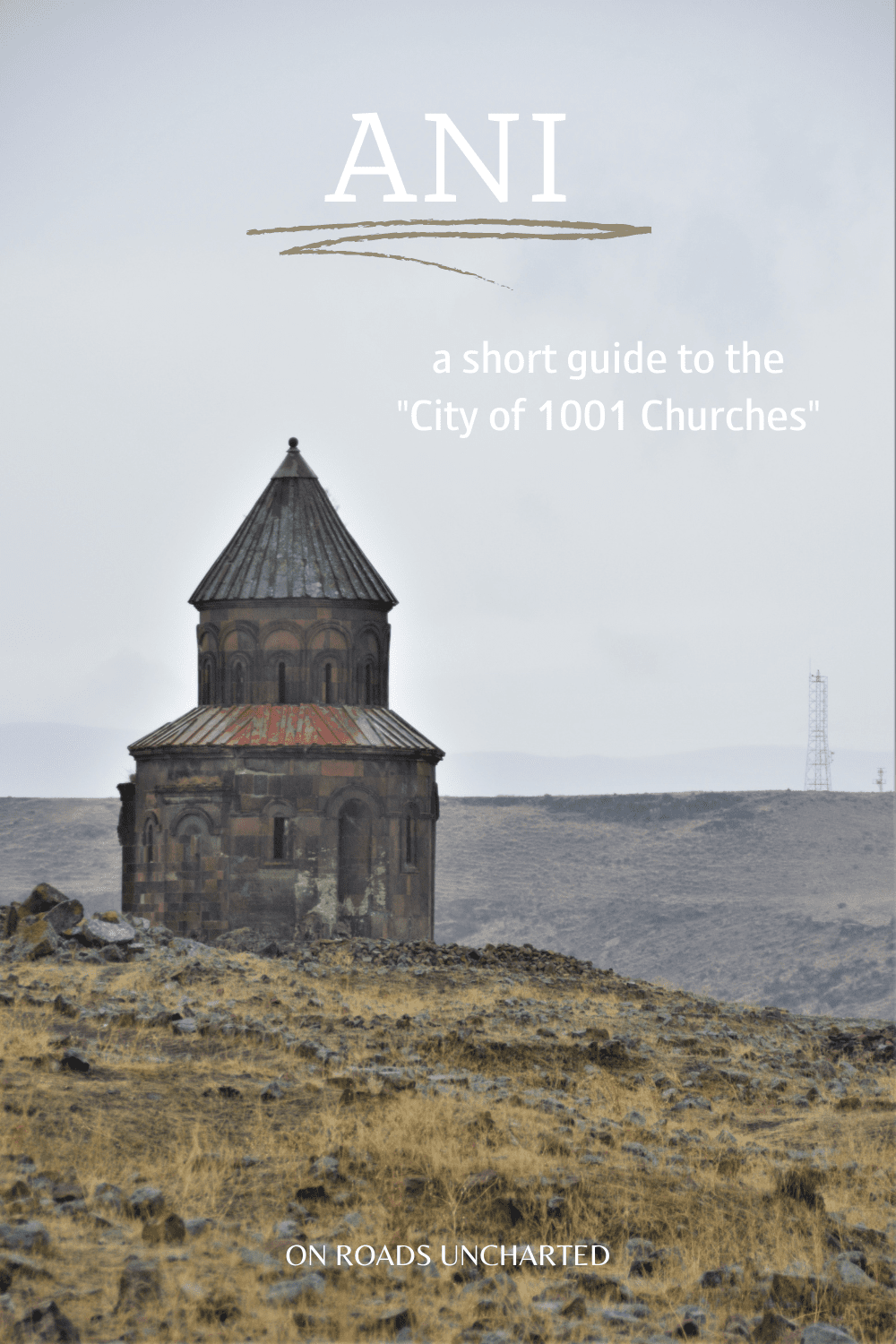Cradling the Turkish-Armenian border in the far east of the country, the magnificent ruins of Ani, the “City of 1001 Churches”, might be one of Turkey’s most underrated archaeological sites. In a country abound with the remnants of old, these lonesome vestiges bear witness to the region’s intriguing Armenian past.
Through a steamed-up window I gaze upon a gloomy world.
Thick raindrops tumble from a drab sky towards a distant land covered by withered culms and dampened soil. Occasional huts, tugged away under corrugated iron roofs and surrounded by simple mud walls, break up the monotony, as droves of geese, unfaced by the elements, waddle across barren fields and muddy courtyards filled with wet haystacks and old machinery.
It is a vast and empty place. Turkey’s forgotten east.
Yet, this wasn’t always the case. A millennium ago, the Armenian Bagratid dynasty, wedged in between the Arab and Byzantine cosmos, shook of the shackles of subjugation, and carved out a powerful kingdom that stretched from the Anatolian plains into Persia and the foothills of the Caucasus down to the deserts of Mesopotamia.
Still, as the bus travels across this desolate land, it seems hard to imagine that these endless swaths were once the beating heart of a thriving civilization and home to one of the great cities of the Middle Ages: Ani, legendary capital of the Armenian kingdom, renowned for her earthly beauty and hailed for the divine splendour of her ecclesiastical sanctuaries.
However, as we step off the bus into a grey world of darksome clouds and shrouded skies, her grandeur is revealed. Stretching across the horizon, massive walls rise from the ground below, an impressive ensemble of crumbling battlements and stoic watchtowers alluding to the city’s former glory and the treasures hidden behind her humbling ramparts.
And there, resting behind perennial gates and guarded by an ever-vigilant lion, her striking remains lie scattered across a windswept plain. A domed sanctuary broken in half. Decaying temples exposed to the elements. An abandoned church, the prowess of her erectors still visible in her weathered murals and intricate carvings. The distant silhouette of a cathedral.
These are the mesmerising remnants of Ani, the last witnesses to her faded greatness.
This article contains everything you need to know in order to visit the ancient city of Ani independently from Kars, including what to see, how to get there, where to stay, and more.
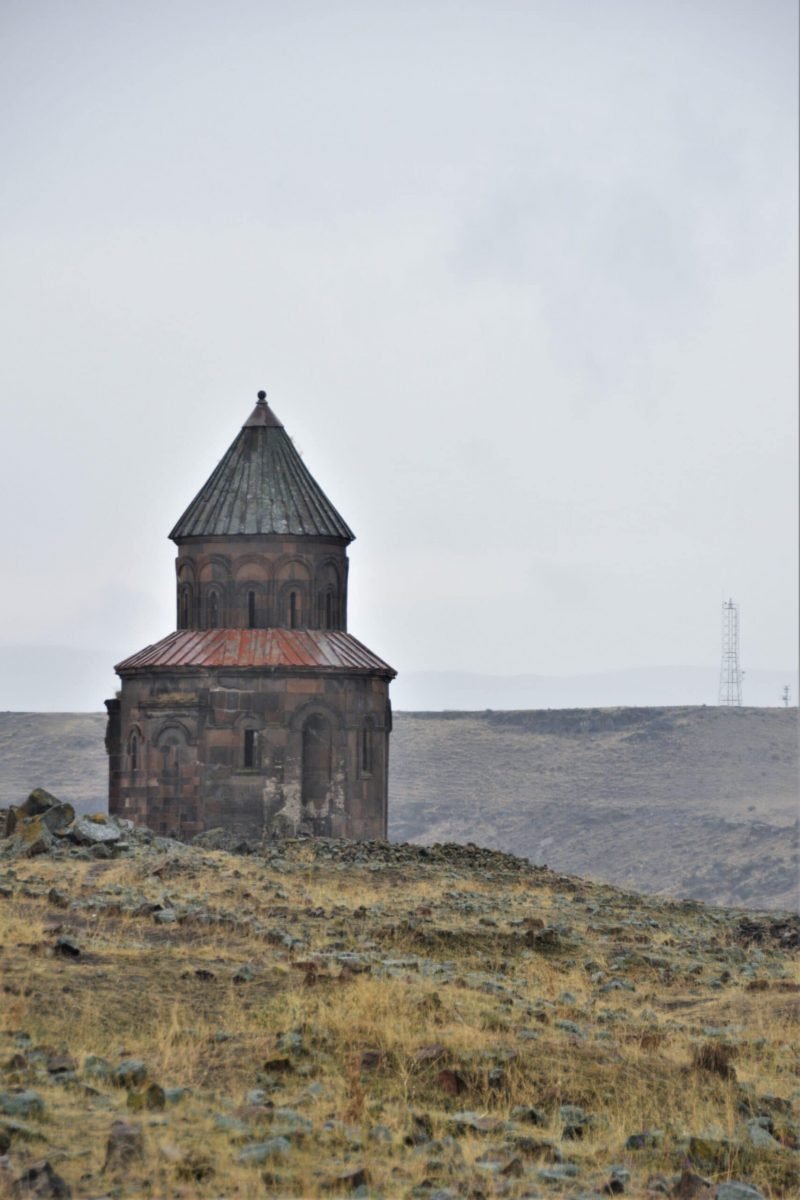
Entrance Fee | 50 TL (October 2022)
Opening Hours | Winter (Nov-Mar) 8:00-17:00 | Summer (Apr-Oct) 8:00-19:00 | open every day
Public bus to Ani | 40 TL return; leaves Kars at 10:00, returns at 13:30
A SHORT HISTORY OF ANI
Although founded in the 5th century CE as an Armenian fortress, it wasn’t until the 10th century that Ani rose to prominence and became one of the great urban centres of her time. Appointed capital of the Bagratid Kingdom in 961, Ani’s ascension was rapid and by the turn of the millennium, the city had already amassed a population of well over 100.000 inhabitants (as comparison, Rome at that time had 35.000 citizens, Paris merely 20.000!).
Perfectly positioned along the ancient silk road, Ani profited greatly from the myriads of traders and travellers passing through her gates and soon established herself as the economic and cultural centre of the region. It was a time of great splendour and, carried by the philanthropy and wealth of her Bagratid sovereigns, Ani prospered.
The golden years were short-lived though.
Merely 18 years after the Armenian kingdom was bequeathed to the Byzantine throne in 1046, thousands of corpses piled up in the streets and blood ran down the gutters. The Seljuks had arrived in Anatolia.
“Putting the Persian sword to work, they spared no one… […] The dead bodies were so many that they blocked the streets; one could not go anywhere without stepping over them.”
Sibt ibn al-Jawzi, Turkish historian
Even though Ani briefly recovered under the Georgian-Armenian Zakarids dynasty in the 12th century, the woes of 1064 repeated themselves when the Mongols swept across Asia and sacked the city in 1236, massacring large parts of the population. A devastating earthquake sealed Ani’s demise in 1319.
After her incorporation into the Ottoman Empire in the second half of the 16th century, a small settlement survived within her walls, however, the population slowly dwindled and by 1735 Ani was completely abandoned when the last monks left the crumbling metropolis.
Due to her precarious position at the Turkish-Armenian border, Ani remained closed off to the wider public up until 2004. In 2016, Ani was inscribed as a UNESCO World Heritage Site.

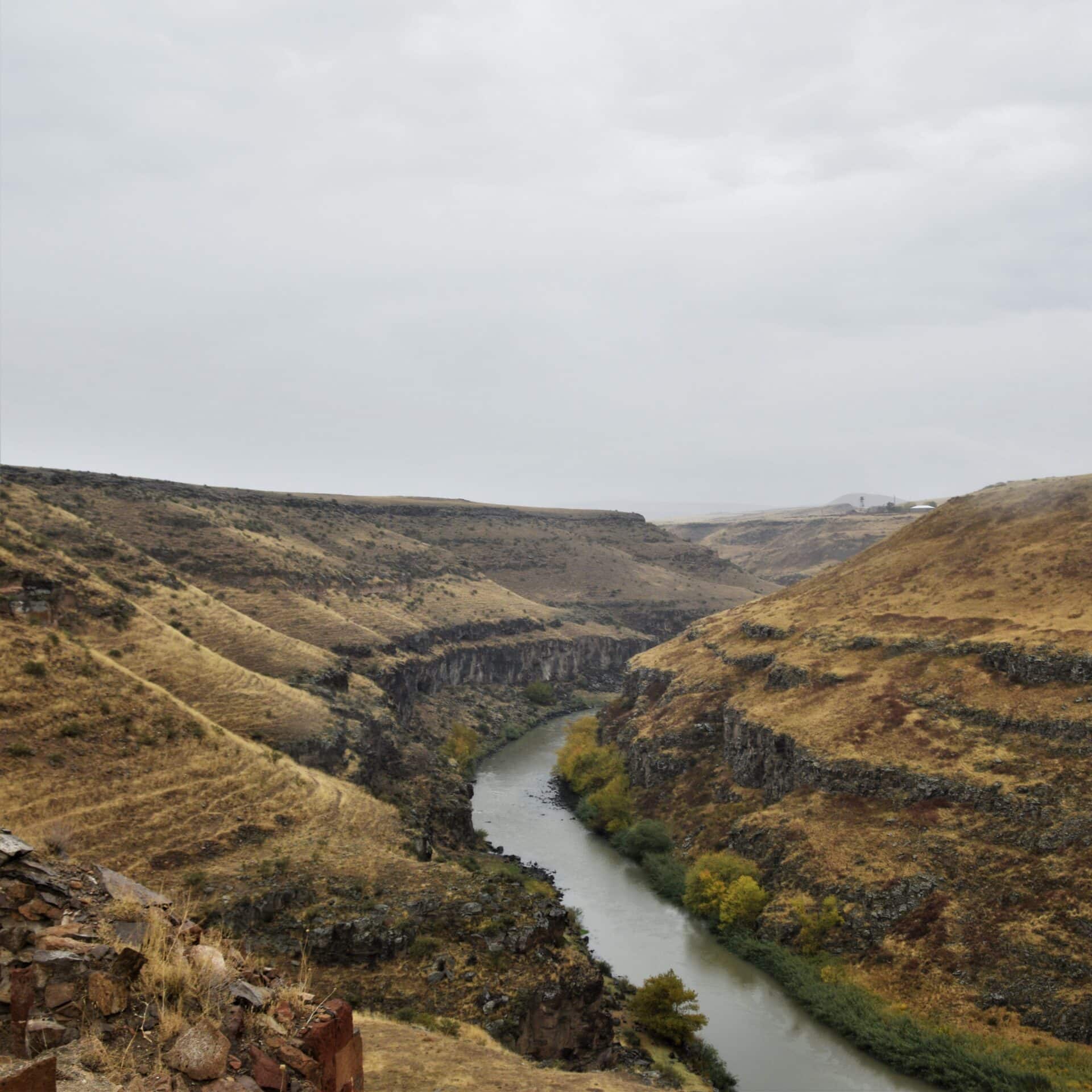
VISITING THE ARCHAEOLOGICAL PARK
Getting around the archaeological park is very intuitive, as you will either follow the paths clock or anti-clockwise. However, since you won’t have forever to wander around these incredible ruins (roughly 2 ½ hours, should you take the public bus), I do suggest opting for the left path once you have entered the city.
The more beautiful buildings (Church of St. Gregory of Tigran Honents, Ani Cathedral, and Manuçehr Mosque), as well as the impressive Archujan River are located on Ani’s eastern fringes, therefore, visiting them first will give you peace of mind and prevent you from potentially having to rush them at the end.
Tickets are collected at the visitor centre next to the parking lot.
As of October 2022, tickets cost 50 TL (2,7€). There is also an audio guide available for an additional 25 TL.
RAMPARTS OF SMBAT II
Erected by king Smbat II shortly after Ani’s ascension as capital of the Armenian Kingdom, these impressive fortifications ought to protect the city’s exposed northern side not shielded by the local topography. Designed as a double lined defence system, intersected by semi-circular watchtowers, the wall was continuously strengthened in the following decades, the expansions often paid for by wealthy benefactors.
Three gates lead into the city from the north: the Lion Gate, the Kars Gate, and the Dvin Gate. Due to its size and position, it is assumed that the Lion Gate, named after a stone plaque showing the Bagratid coat of arms, functioned as the main entrance into the city. You will also spot a Kufic inscription (an early form of the Arabic script) on a tower to the right of the Lion Gate, commemorating the conquest of Ani by the Seljuk sultan Alp Arslan in 1319.
Look closely and you will spot decorations made of black stone such as crosses and other geometric patterns adorning the walls. There is even a swastika on one of the Lion Gate’s towers! Even though I am well aware that the symbol has existed long before Hitler decided to tarnish its reputation, seeing it positioned so prominently feels weird as an Austrian.
SURP AMENAP'RKITCH CHURCH/CHURCH OF THE HOLY REDEEMER
Surp Amenap’rkitch Church, also known as the Church of the Holy Saviour of All or Church of the Redeemer, will be the first Christian temple you pass on your visit to Ani.
Built in 1035 during Ani’s golden years, legend has it that prince Abulgharib Pahluvani had it commissioned to house a piece of the True Cross, which he obtained from Byzantine emperor Michael IV on a visit to Constantinople.
Already damaged by previous earthquakes, the eastern half of the church collapsed entirely during a devastating storm in 1957. Although the remains have since been stabilized by scaffolding, the sanctuary is currently not accessible by the public, and can only be witnessed from afar.
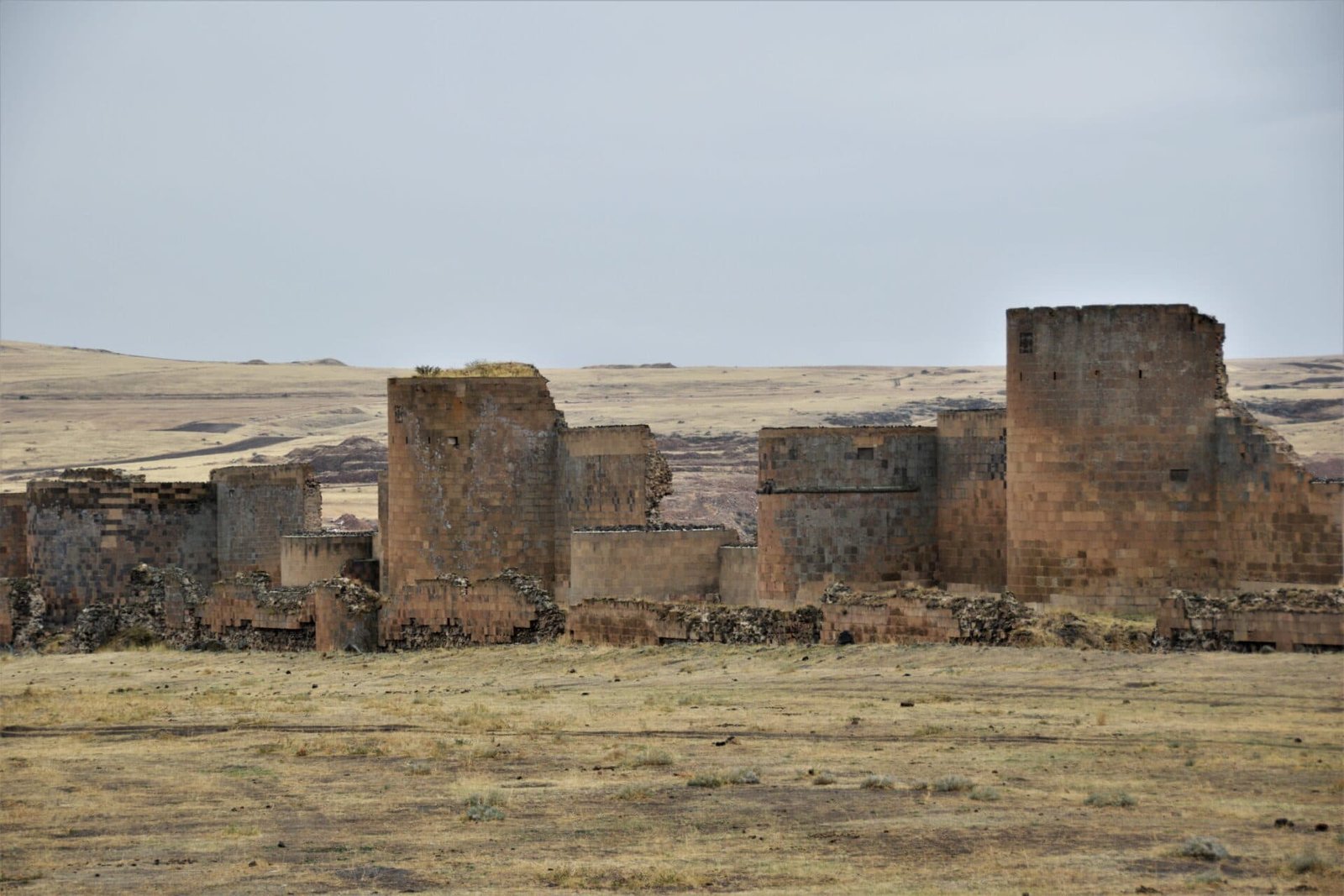

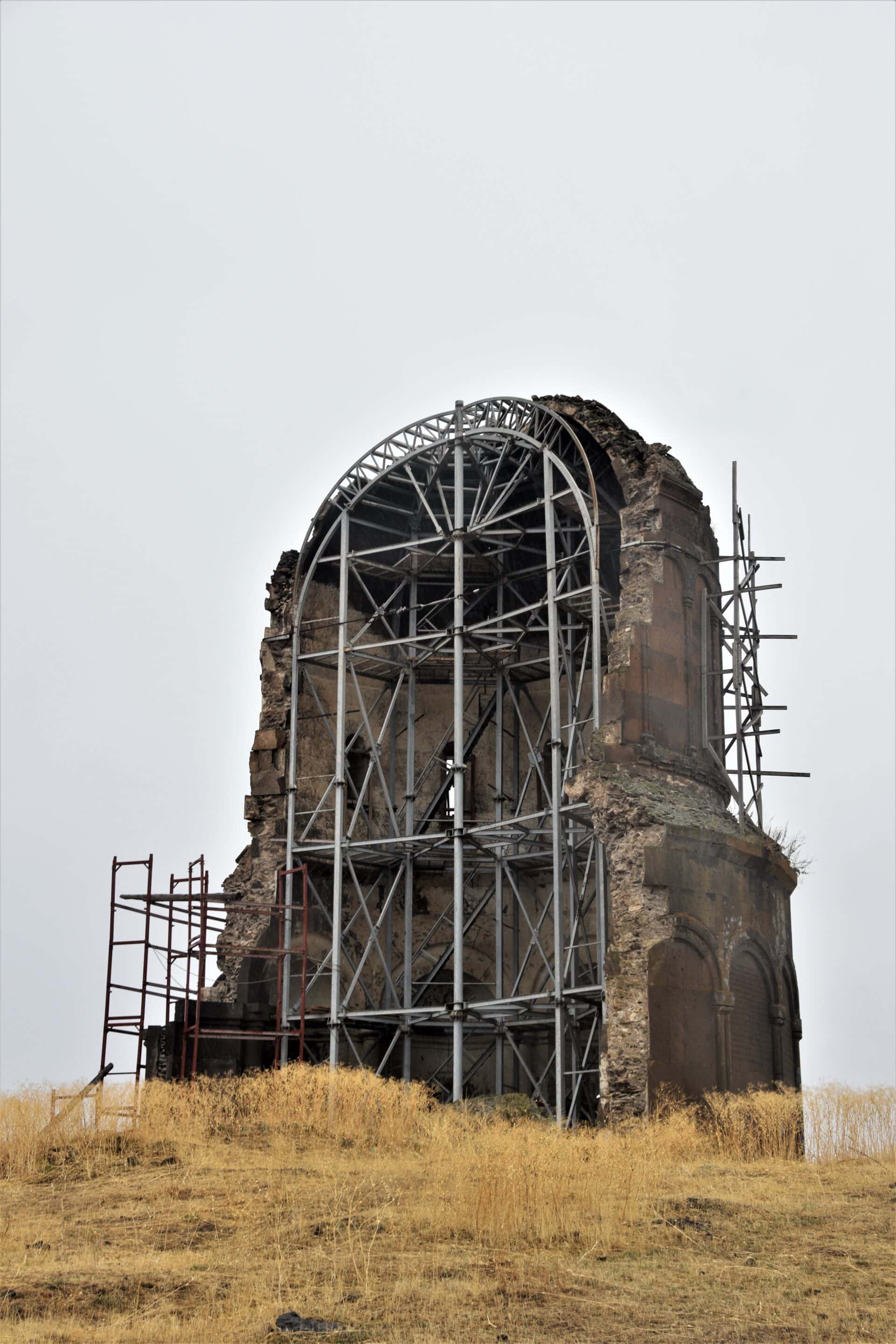

CHURCH OF ST. GREGORY OF TIGRAN HONENTS
Situated at the edge of the dramatic gorge separating Turkey and Armenia, the Church of St. Gregory of Tigran Honents stands proud as the best-preserved building in Ani.
While the exterior is adorned with stunning stone carvings, depicting several real and fabulous creatures respectively, the interior is covered in spectacular murals, highlighting the Life of St. Gregory the Illuminator, the Life of Christ, as well as the Life of St. Nino, a Roman woman who converted Georgia to the Christian faith.
Since such frescoes are very rare in Armenian churches, archaeologists believe them to have been painted by Georgian artists, coinciding with Georgian Zakarid rule in Ani.
To reach the church, leave the main path and turn left after passing the Church of the Redeemer. A set of stairs will lead down to this spectacular monument.
CATHEDRAL OF ANI
Visible from anywhere in the city, the Cathedral of Ani is by far the grandest building that has survived the ages. Finished in 1001 (or 1010), the temple was dedicated to the Virgin Mary and constructed under the watchful eyes of Trdat the Architect, the most renowned Armenian builder of the time (he also restored the dome of the Hagia Sophia in Constantinople after it partly collapsed in 989).
After Ani was seized by the Seljuk Turks in 1064, the cathedral was converted into a mosque and renamed Fethiye Camii (Victory Mosque).
Interestingly enough, the interior contains several “proto-Gothic” elements, such as pointed arches and clustered piers, architectonic features that would only appear in European churches 200 years later! Therefore, scholars have argued that the Cathedral of Ani might have played a significant pioneering role in the emergence of Gothic ecclesiastical architecture.


MANUÇEHR MOSQUE
Amidst Ani’s many Christian churches, Manuçehr Mosque feels oddly out of place. Besides being the only mosque in the archaeological park, the complex, consisting of the mosque, an octagonal minaret, a tomb, and a fountain, holds a special cultural significance, however.
Constructed seven years after the brutal Seljuk conquest, it is the first mosque that can be connected to the Turkish presence in Anatolia.
After serving as a public museum during Russia’s occupation of north-eastern Turkey (1878-1920), the Manuçehr complex has been repurposed as a mosque and remains in use to this day.
CITADEL OF ANI
Although one of the oldest parts of the city dating back to the 7th century CE, the citadel, situated at the southern end of Ani, is probably the least interesting part of the site.
Essentially a glorified heap of stones, few remains of the former royal Bagratid palace.
A stroll to the highest point in the park is still worthwhile though, as the hill not only offers mesmerising views of Ani but the stunning Archujan River meandering around the Church of Kizkale, precariously balancing on a narrow promontory, as well.
You will also be able to spot countless manmade caves, used by the first settlers seeking refuge against invading forces, carved into the cliffsides surrounding Ani.
CHURCH OF ST. GREGORY OF THE ABUGHAMRENTS
Most likely constructed in the 10th century as a private chapel for the Pahlavuni family, it also featured the family’s tomb, now reduced to rubble.
Located in the western part of Ani, the church has survived numerous sieges and natural disasters virtually unscathed and remains one of the most striking buildings within the city limits. At least from the outside. Unfortunately, the frescoes inside have all but faded.
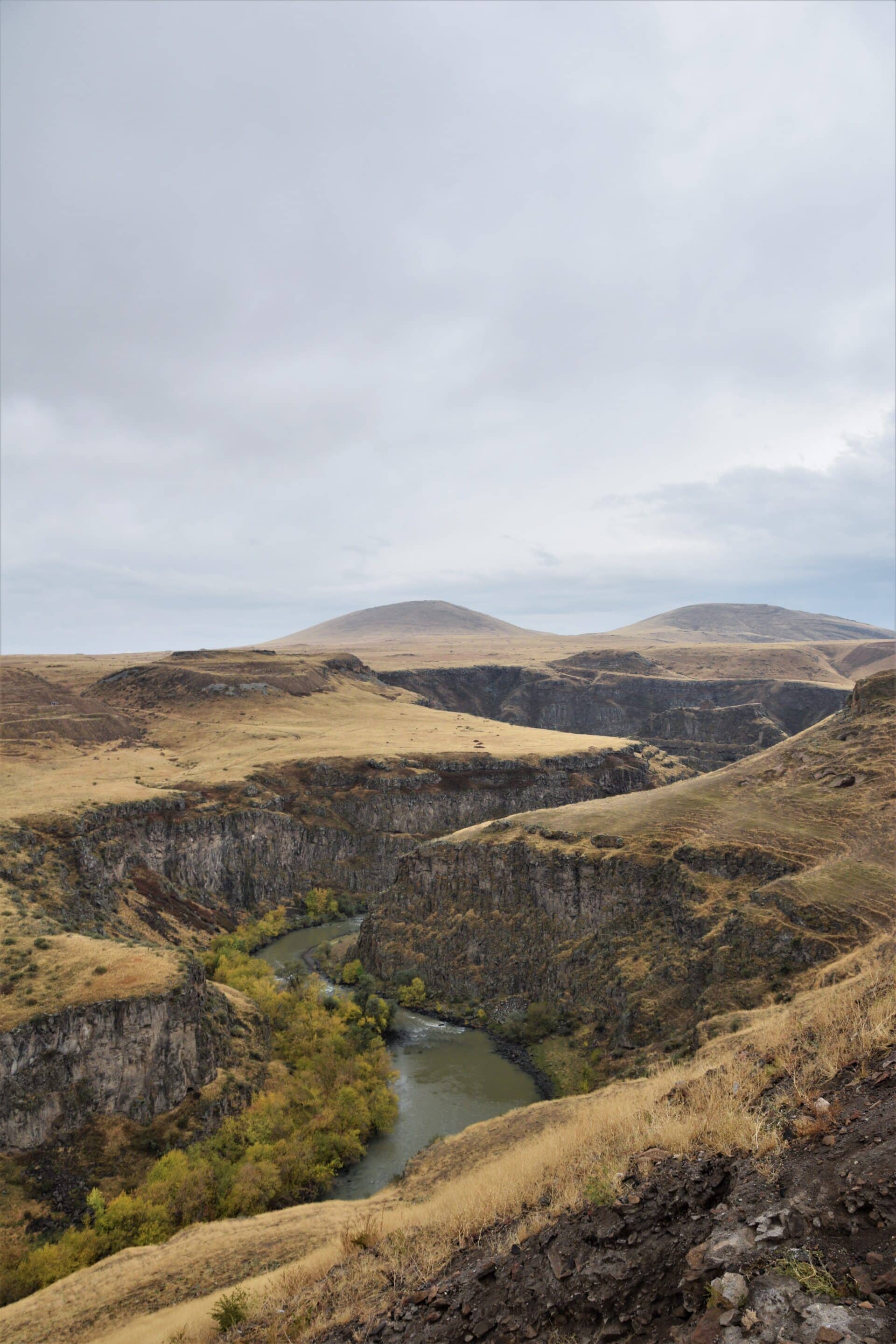


HOW TO GET TO ANI
By public bus | There is a daily bus that leaves for Ani at 10:00, departing from the corner of Faikbey Caddesi and Gazi Ahmet Muhtar Paşa Caddesi, near the Mix Point Café & Restaurant.
The ride takes roughly 45 min and costs 20 TL (October 2022).
In order to return to Kars simply take the same bus departing from the archaeological park at 13:30. This will give you roughly 2 ½ hours to explore the site (enough time to see most of Ani but not enough to linger and properly soak in the atmosphere and scenery). I felt rushed.
By private taxi | Alternatively, you could opt for a private taxi. Prices will hover around 20€, however you will be able to negotiate the time needed to visit Ani, enabling you to wander these incredible ruins at your own pace.
WHERE TO STAY
Hotel Kent Ani | Since you will most likely stay in the regional capital of Kars, you’ll have plenty of accommodation options, however, I really recommend Hotel Kent Ani.
Located right in the centre of Kars (halfway between the train station and the main landmarks), it offers spacious and clean rooms for affordable prices (about 12€/night including breakfast) in quite a fancy atmosphere, especially if you are used to noisy dorms and shared bathrooms. The beds are extremely comfortable, as well, and, albeit nothing extraordinary, the breakfast was of a higher quality than similar breakfasts I had in Turkey.
Kars Castle (as well as other historic sights) is only 10min away by foot and you’ll find plenty of supermarkets, restaurants, and kebab shops in close proximity to the hotel.
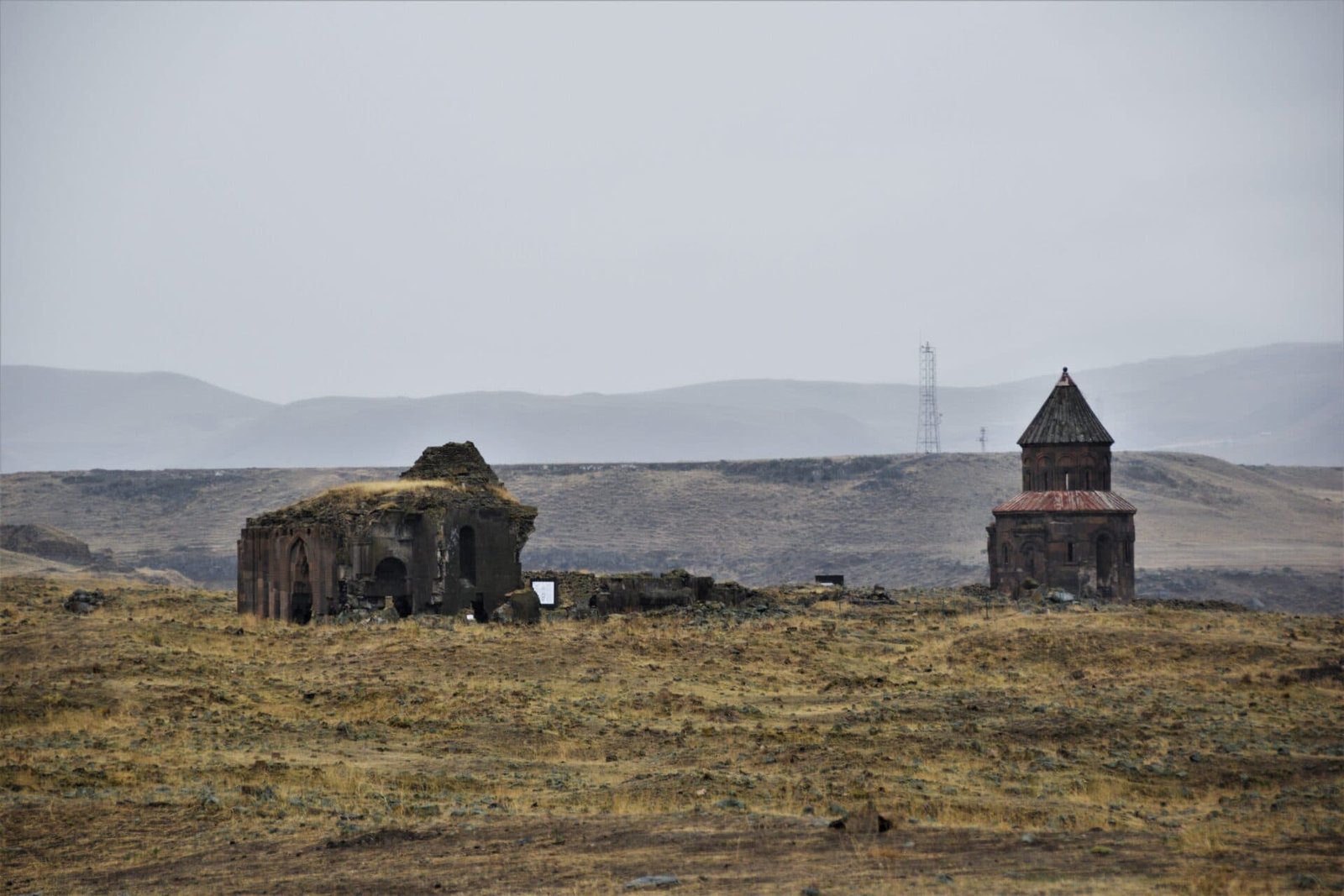
WHERE TO NEXT?
For more content consider following me on Instagram.
On the hunt for crumbling ruins and remnants of the past? Consider these incredible places:
MYSTRAS | BYZANTIUM’S LAST CAPITAL
